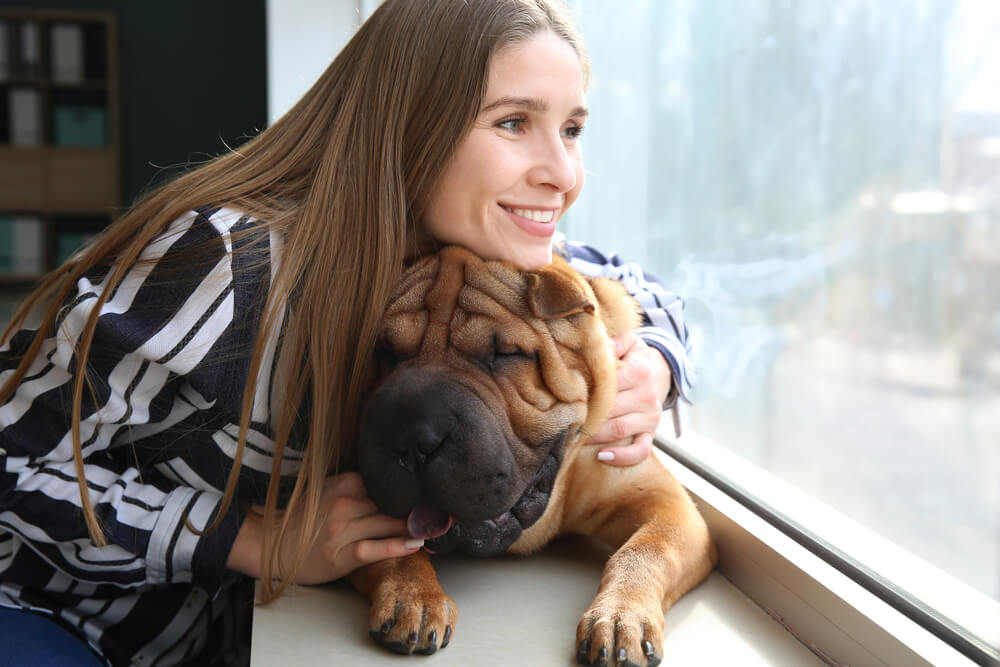Several different skin conditions can affect Shar Pei dogs. Some of the more common ones include allergies, hot spots, and skin infections.
Allergies are a very common problem in dogs, and Shar Peis are no exception.
Allergies can be caused by many different things, including certain foods, environmental factors like pollen or dust, or even certain chemicals found in grooming products.
If your dog is scratching a lot or seems to be in discomfort, he may be experiencing an allergic reaction.
Hot spots are another common skin condition in dogs. They often appear as red, irritated patches of skin that can be painful for your dog.
If you notice a hot spot on your dog’s skin, it’s crucial to take him to the vet so he can be treated.
Skin infections are another problem that can affect Shar Peis. These infections are usually caused by bacteria or fungi and can be very uncomfortable for your dog.
Several treatment options are available for Shar Pei’s skin conditions. Your vet will recommend the best course of treatment based on the specific condition your dog is experiencing.
For allergies, changes in diet or environment may be necessary to help your dog feel better. In addition, more aggressive treatment, antibiotics, or corticosteroids may be necessary.
Why Is My Shar Pei So Itchy?
There are a variety of reasons why your Shar Pei may be itchy. It could be due to an underlying medical condition, such as allergies or skin irritations. Or, your furry friend may simply be experiencing dry skin.
Whatever the cause, you can do a few things to help soothe your pup’s itchiness and get to the bottom of the problem.
Start by giving your dog a good bath with quality dog shampoo. This will help remove any irritants that may be on the surface of the skin.
Be sure to avoid using human shampoo, which can further irritate the skin.
After bathing, apply a hypoallergenic lotion or cream to the affected areas. You can also try giving your dog an oatmeal bath, which can help relieve itchiness and dryness.
If the itching persists, it’s time to consult your veterinarian. They will be able to determine if there is an underlying medical condition causing the problem and prescribe the appropriate treatment.
You can help your itchy Shar Pei feel better in no time with a little TLC!
Why Is My Shar Pei Shedding So Much?
If you have a Shar Pei, you’re probably familiar with the breed’s reputation for shedding. But if your dog is shedding more than usual, it could be a sign of a skin condition.
There are several possible causes of excessive shedding in Shar Peis. One is allergies, which can be caused by anything from environmental allergens to food sensitivities.
If your dog is scratching a lot or has bald patches, it’s worth taking them to the vet for a check-up.
Another possible cause of shedding is hormonal imbalances. This can be diagnosed by your vet and may require treatment with medication.
Finally, some Shar Peis simply shed more than others. This is usually nothing to worry about, but if you’re concerned, talk to your vet.
They can help you determine if there’s a medical reason for the excessive shedding.
If your dog is shedding more than usual, it’s essential to take them to the vet for a check-up.
There are several possible causes of excessive shedding, and only a professional can diagnose the problem. However, once the cause is determined, they can help you find the best way to treat it.
How Does Shar Pei Mutation Work?
The Shar Pei is a Chinese breed of dog known for its distinctive wrinkled skin. The wrinkles are caused by a genetic mutation that alters the development of the dog’s hair follicles.
Typically, hair follicles go through a cycle of growth and rest. During the growth phase, the follicle produces new hair. Then, the old hair dies and falls out.
In Shar Peis, the mutation causes the follicles to remain in the resting phase for too long. As a result, the hairs don’t shed properly and get trapped under the skin, leading to characteristic wrinkles.
The good news is that there’s no health risk associated with the mutation. Shar Peis don’t suffer from any skin problems or health issues due to their wrinkles. Many people find them quite cute!
If you’re considering getting a Shar Pei, prepare for some extra shedding. The breed is known for being heavy shedders, so you’ll need to brush them regularly to keep the fur under control.
How Long Does Familial Shar Pei Fever Stay in Dogs?
Familial Shar Pei fever (FSF) is a condition that affects Shar Pei dogs. It’s caused by a gene mutation controlling the body’s inflammatory response.
Dogs with FSF are prone to episodes of high fever, which can last several days.
There is no cure for FSF, but most dogs manage the condition well with medication. In addition, the episodes of fever usually become less frequent as the dog gets older.
In some cases, they may stop altogether.
If you’re thinking about getting a Shar Pei, be sure to ask the breeder about FSF. It’s important to know if the dog you’re considering is at risk for the condition.
Familial Shar Pei Fever is not contagious and does not pose a risk to people.
FSF is not a painful condition, but it can be worrying for owners. If your dog develops a fever, it’s critical to contact your vet immediately. They will be able to advise you on the best course of treatment.
Why Does My Chinese Shar-Pei Have Hives?
Hives are a common skin reaction in dogs. They’re usually caused by an allergic reaction, although other things can also trigger them.
If your Shar Pei has hives, it’s essential to take them to the vet for a check-up.
There are several possible causes of hives in dogs. Allergies are the most common, but other triggers include stress, infections, and hormonal imbalances.
Your vet will be able to identify the cause of your dog’s hives and recommend the best course of treatment.
If your dog has hives, the first thing you should do is try to identify the trigger. If you think it might be an allergy, keep a close eye on your dog for any other signs of allergies, such as itching or runny eyes.
If the hives seem to be caused by stress, try to remove any stressful triggers from your dog’s environment.
Hives are usually not severe, but they can be uncomfortable for your dog. If the hives are severe or if your dog is showing other signs of illness, contact your vet straight away.
How Do I Treat Cherry Eye in My Shar Pei?
Cherry eye is a condition that affects the gland in the third eyelid of dogs. It’s fairly common in Shar Peis, although it can occur in any breed.
The condition is usually harmless, but it can cause discomfort and lead to other problems if left untreated.
The third eyelid is a small, triangular flap of skin in the corner of the eye.
It contains a gland that produces tears. In dogs with cherry eyes, this gland becomes displaced or prolapsed, causing the third eyelid to become visible.
Cherry eye usually doesn’t require treatment, but some dogs may benefit from surgery to reposition the gland.
If your dog has cherry eye, it’s essential to take them to the vet for a check-up. They will be able to advise you on the best course of treatment for your pet.














